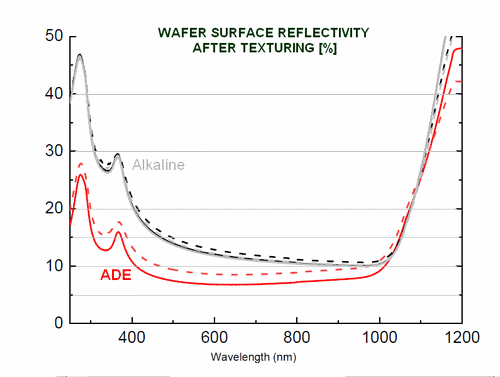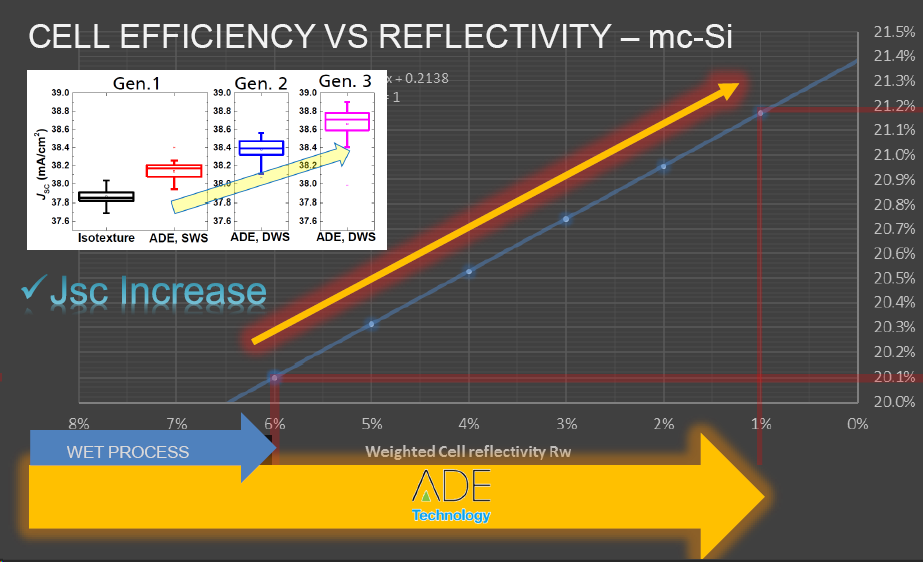> Optimized Adhesion of Plated Silicon Solar Cell Contacts
ADE is introduced as plating pre‐treatment to generate a beneficial nano‐roughness on the silicon substrate. The method is shown to improve the adhesion of solar cell contacts that are structured by local ablation of the passivation layer using ns‐pulsed lasers. Due to the high etch selectivity of the ADE process between silicon and silicon nitride, no additional etch mask is required to protect the passivation layer. In peel force tests on busbars, the average peel‐force raised from 0.3 to 2 N mm−1. In sheer‐test on finger contacts an increase of maximum sheer force and a decreasing length of the finger displacement are observed.
>> Check the full paper: LINK
> Inverted pyramid texture for p-type mono wafers
In collaboration with Fraunhofer ISE, NinesPV are incorportating the ONYX texture ADE into p-type PERC cells. The process developed lead to lower reflectivities than the alkaline process by the formation of small random inverted pyramids. The reflectivity level can be controlled through the process.


> Single side Emitter etch back/removal - edge isolation
The single-side and finely controllable ADE process is well suited for emitter etch back. Both front side and edges are targeted by the process. Complete removal and edge isolation is also possible.
> FLUORINATION
Gas phase Fluorination of layers is also possible with the ADE platform. Its compatibility with roll to roll configuration makes it suitable for the continuous processing and dynamic fluorination of films. The typical reaction when applied to an organic compound is the substitution of hydrogen atoms by fluorine; direct fluorination involves a reaction of the C-H bond with the elemental fluorine. This is the most common method used for the fluorination of polymers.




